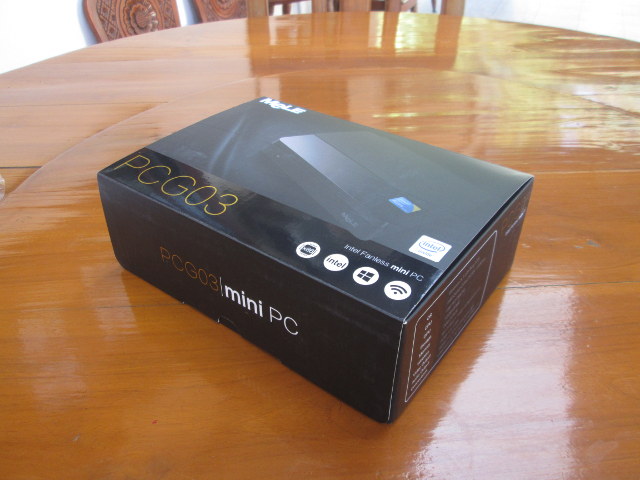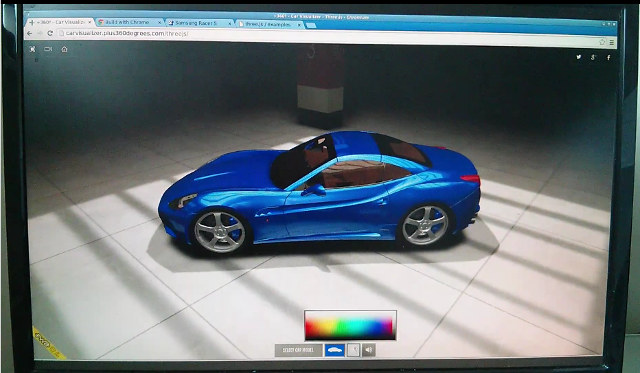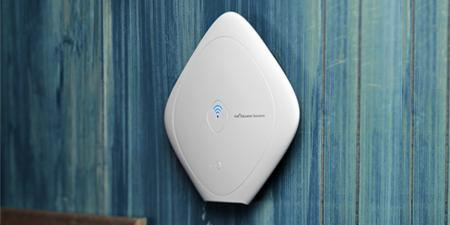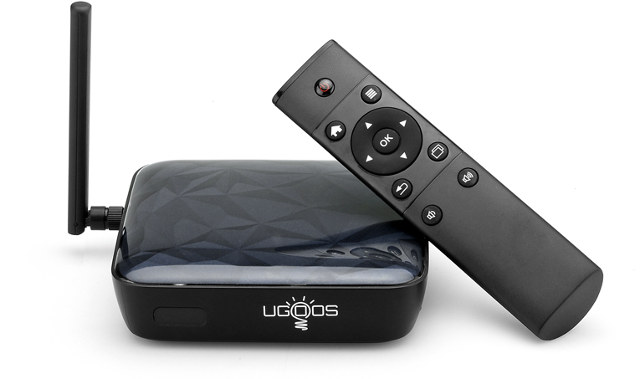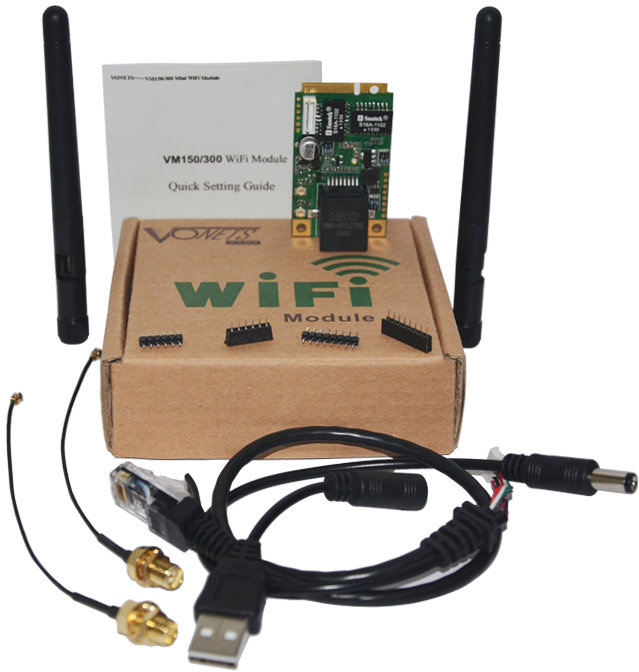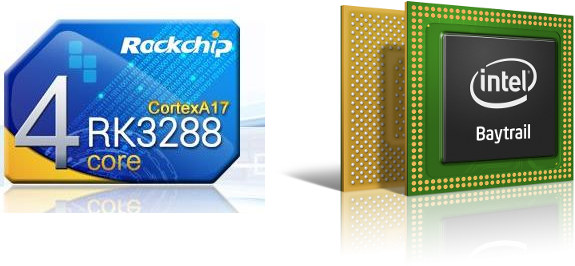MeLE PCG03 was announced in October 2014 with an aggressive price tag of $49 for large orders for barebone systems, and was said to support Windows 8.1 or Android 4.4. MeLE is PCG03 now is now available with 2GB RAM, and 32GB eMMC, and with a properly licensed “Windows 8.1 with Bing NTE”, but no Android for $149 on Ebay, or Aliexpress, and it should eventually show up on MeLE Amazon store. The company sent me a sample for review, so I’ll start by listing the updated specifications, and taking pictures today, before running benchmarks, trying out Kodi, and trying Ubuntu in other posts. MeLE PCG03 Specifications The look of the device and available ports have slightly changed since the first prototype was revealed last year. SoC – Intel Atom Z3735F “Bay Trail” quad core processor @ 1.33 GHz (Bust freq: 1.83 GHz) with Intel HD graphics System Memory – […]
4K Output and Video Playback Capability Tested on 6 ARM based mini PCs and Boards
Since I’ve now got a 4K TV, I’ve decided to test 4K support for six different platforms based on Rockchip, Allwinner, Amlogic, Realtek, HiSilicon, and Mstar processors. For all these platforms I’ll report HDMI 4K output options, user interface resolution, and take close up pictures of the screen while displaying a 4K 1×1 grid picture and video with the image players, and video players such as MX Player or XBMC depending which are available in the firmware. Test Setup and Procedure I’m using LG 42UB820T 42″ UltraHD television with an HDMI cable connected to HDMI 1 port of the TV. Please note that my TV only support 8-bit color depth / YCbCr 4:2:0 which may cause compatibility issues with some boxes, at least the ones based on RK3288 processor, for 2160p 50Hz or 60Hz mode. I’ll take close-up pictures of the screen with a Canon PowerShot A2300HD camera by holding […]
Linux 3D GPU Acceleration Demo on Rockchip RK3288 based Firefly Board
Several devices and development boards based on Rockchip RK3288 processor already support Linux, usually with images based on Ubuntu, including Ugoos UM3 / UT3, Open Hour Chameleon, and Firefly-RK3288 among others. What these images lack however, is support for 2D and 3D graphics acceleration with the GPU, and hardware video decoding/encoding with the VPU. But Jas-hacks has made some progress with 3D graphics support. He has managed to add GPU acceleration via EGL/OpenGL ES bringing 3D acceleration to the platform, but 2D support is not there yet, meaning X11 still heavily relies on software rendering. But the implementation is still good enough to run the usual es2gears and glmark2-es2 benchmarks. as well as some WebGL demos in Chromium. Performance is currently underwhelming, with 50 points in glmark-es2, even a bit lower than the score (54 points) I got with ODROID-X board powered by Exynos 4412 SoC with a Mali-400MP4 GPU, […]
Intel Education Content Access Point Is Designed for Schools with Unreliable Internet Connectivity and Power
Intel has introduced a new device that stores, manages, and publishes digital content for schools with low or intermittent connectivity and /or power. The device stores training materials in its internal storage, comes with a battery, and can be accessed by up to 50 students simultaneously. Specifications: SoC – Intel Atom Bay Trail-I E3815 Processor @ 1.46GHz with Intel HD graphics System Memory – 2GB DDR3L-1067 Storage – 8GB eMMC, Optional 500GB SATA HDD Connectivity – WiFi 802.11 a/b/g/n/ac, Wired Gigabit Ethernet, Optional 3G, Optional LTE USB – 1x USB 3.0 Misc – System and 3G/LTE LEDs, Factory reset and power buttons Power Supply – 12V/2A Battery – Lithium-ion polymer 7.4v, 4050mAh (up to 5 hours of battery life) Dimensions – 190 x 190 x 30mm Weight – 607 grams The system runs Ubuntu 12.04. The optional 500GB hard drive includes 400GB of preloaded content, and educator can use the remaining […]
Ugoos UT3S is an Update to UT3 Android & Ubuntu TV Box with a Fan
Many people like ARM based media player because most of them run Android providing access too many apps available via Google Play Store, a similar experience to what they got used with phones and tablets, and also because they are small, inexpensive, and fanless. However, the latest ARM processors such as Rockchip RK3288, can get really hot, so most of the time CPU frequency needs to be limited to avoid overheating and stability, which reduces performance. Which may be why, Ugoos decided to launch UT3S mini PC, an upgrade to UT3 mini PC with a mini Fan placed on top of a larger heatsink. Ugoos UT3S specifications and look remain very similar to the original model: SoC – Rockchip RK3288 quad core CortexA17 @ 1.80 GHz + Mali-T764 GPU with support for OpenGL ES 1.1/2.0 /3.0, and OpenCL 1.1 System Memory – 2GB to 4GB DDR3 Storage – 16GB or […]
Vonets VM300 Wi-Fi & Ethernet IoT Board with Mediatek MT7620 Runs OpenWRT
Mediatek MT760 is a recent Wi-Fi SoC found in some Nexx WT3020 routers, and WRTnode development board. Both run OpenWRT and costs $17 to $30 depending on the amount of flash, and ports with the former featuring two Ethernet ports, and the latter access to GPIOs. You could probably open the case of the Nexx routers and solder some wires to get access to GPIO, and you can hack an Ethernet cable for WRTnode, but another options could be Vonets WM300 kit that includes a board with Wi-Fi and Ethernet, a cable for USB / Ethernet connection, headers for GPIOs, and two external antennas for less than $30. An OpenWRT SDK is also provided for the kit. Specifications listed for VM300 board: Processor – Mediatek MT7260N MIPS processor @ 580MHz Storage – 4MB SPI Flash (option: 8MB/16MB) for firmware System Memory – 32MB or 64MB SDRAM Connectivity Wi-Fi Single band […]
Antutu Benchmark – Rockchip RK3288 (ARM) vs Intel Atom Z3735F
Most ARM mini PCs run Android, while mini PCs based on Intel Atom Z3735F currently all ship with Windows 8.1, so it makes comparison difficult. But since Linuxium posted triple boot instructions (Ubuntu, Android, Windows 10) for MeegoPad T01, he’s also run Antutu 5.6 on the platform, so we’ve got a comparison point. The Android image used in the Intel platform is Android-x86, and may not have been optimized for Bay Trail yet, so even though the comparison may not be perfect, it could still be interesting to find out the strengths and weaknesses of the Intel processor, against one of the fastest ARM processor found in mini PCs: Rockchip RK3288. I’ll use the Antutu 5.3 score I got with Open Hour Chameleon as a reference point. Rockchip RK3288 Intel Atom Z3735F Delta CPU Quad core Cortex A17 @ 2.0 GHz Quad core @ 1.33 GHz (Burst 1.83GHz) GPU ARM […]
Snappy Ubuntu Core is an IoT Linux Distribution for ARM and x86
Canonical has announced a version of Ubuntu specifically designed for IoT devices running Linux, with a low hardware requirements, and a new package manager called snappy, replacing apt-get for this version of Ubuntu, which provides simpler, faster, and more reliable updates, stronger security, and allows roll-backs in case something goes wrong. Easy firmware updates are something missing in most connected device, which means they are more vulnerable to potential hackers, but with snappy security updates should be able to make it regularly, so that if something like heartbleed occurs again, you know your router, home automation gateway, connected washing machine, or robot will be soon patched automatically. Let’s go through the hardware requirements first: Processor – 600 MHz processor (ARMv7 or greater, or x86) System Memory – 128 MB RAM or greater (The system itself uses 40 MB RAM) Storage – 4GB flash / storage for factory reset and system […]

